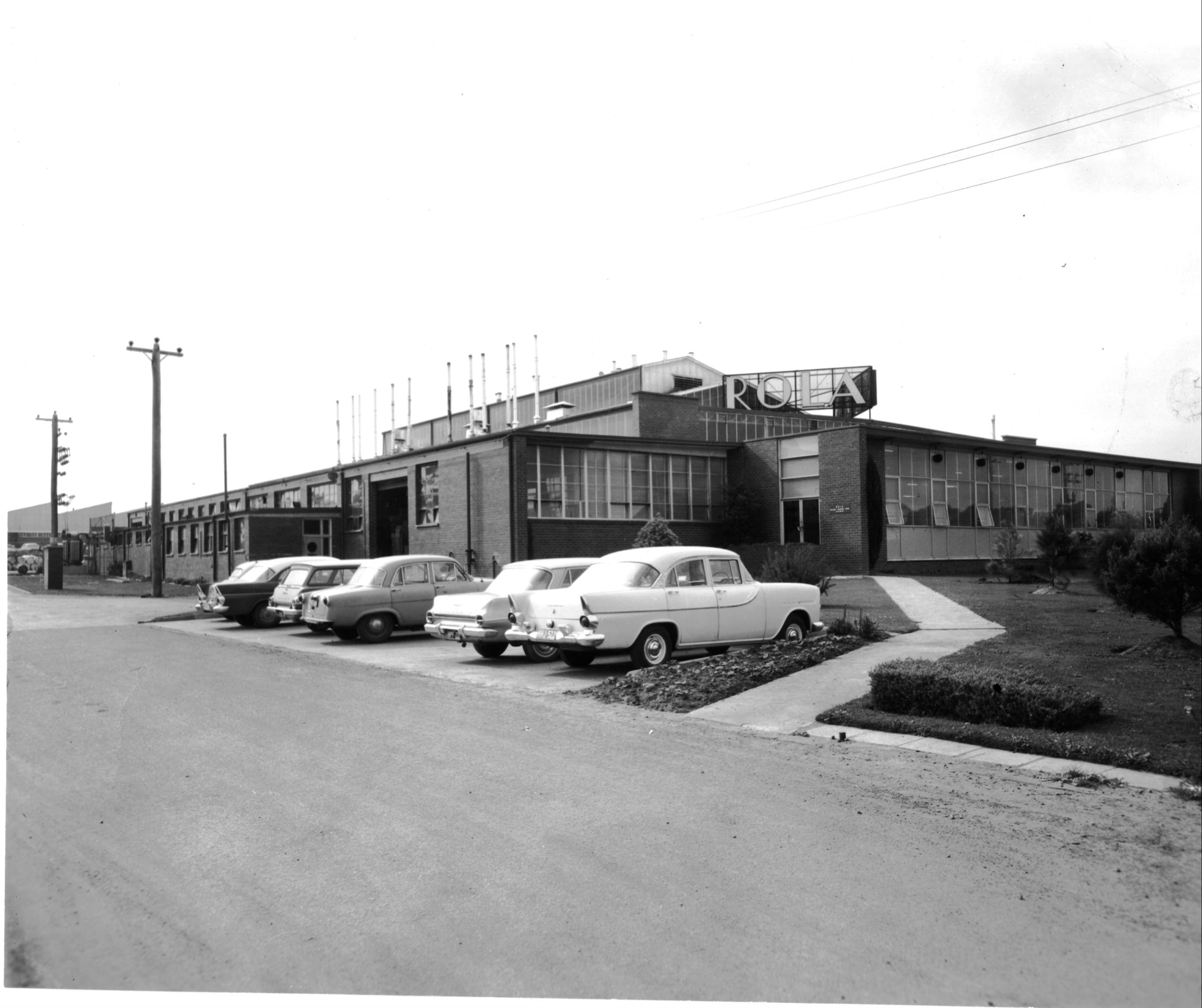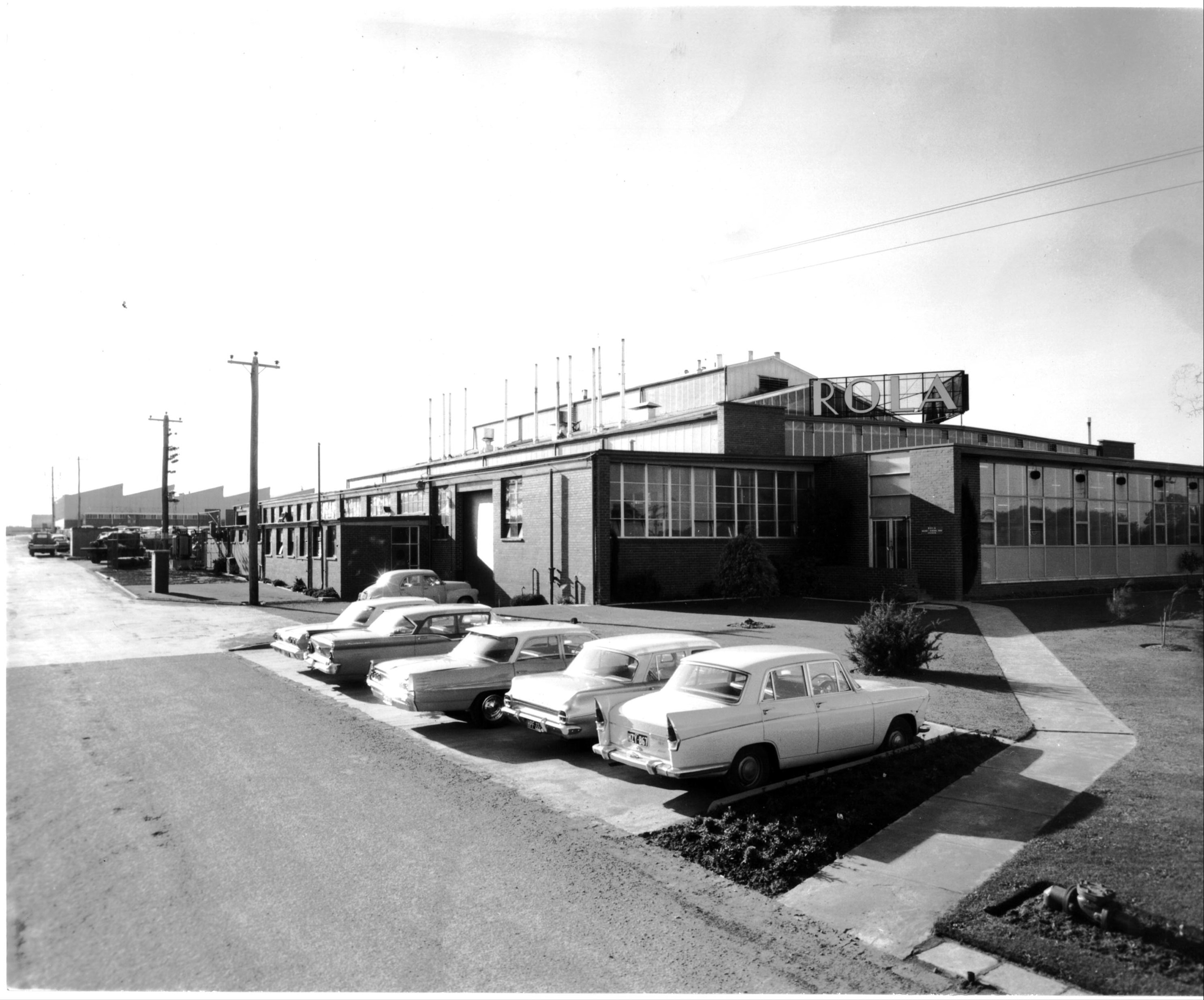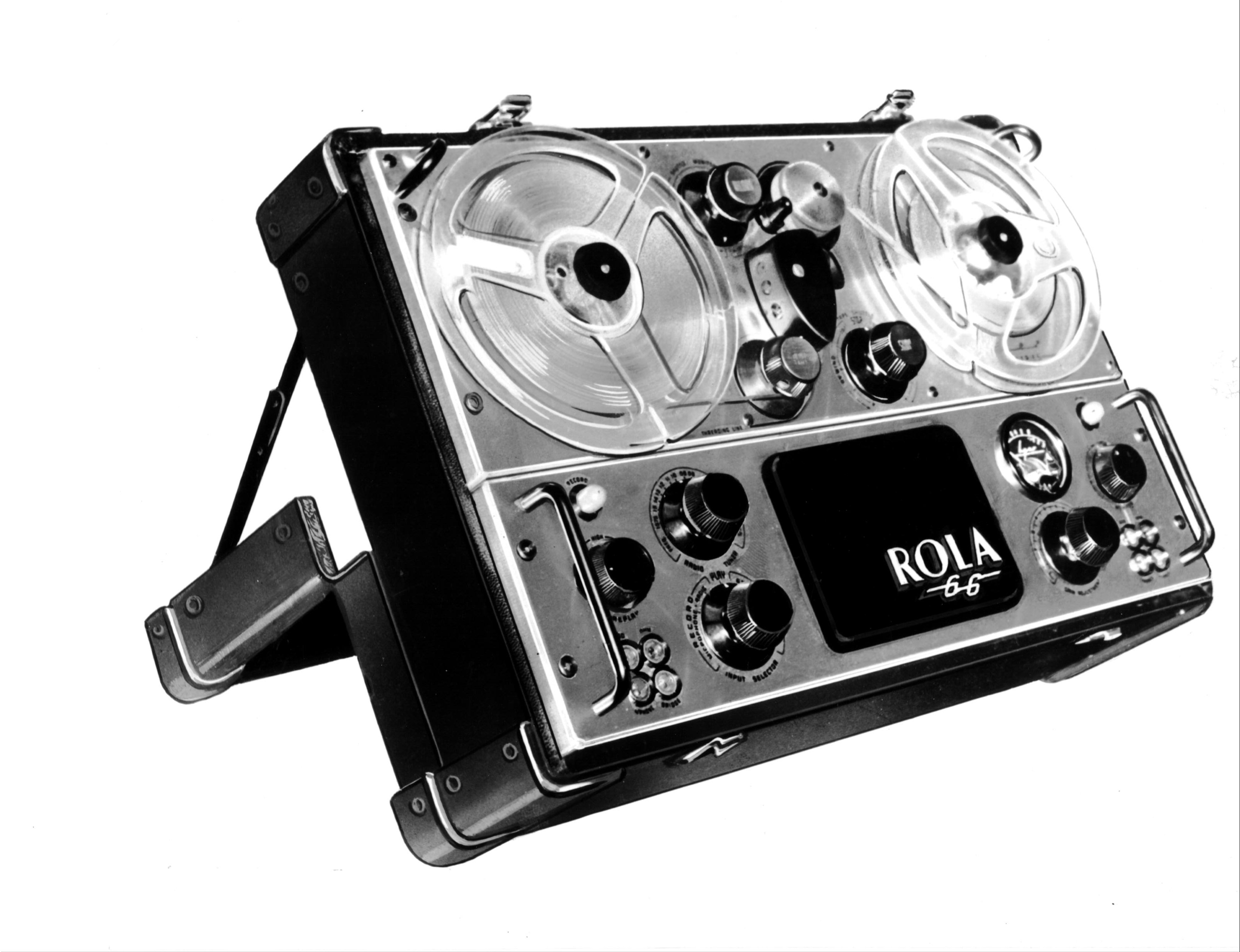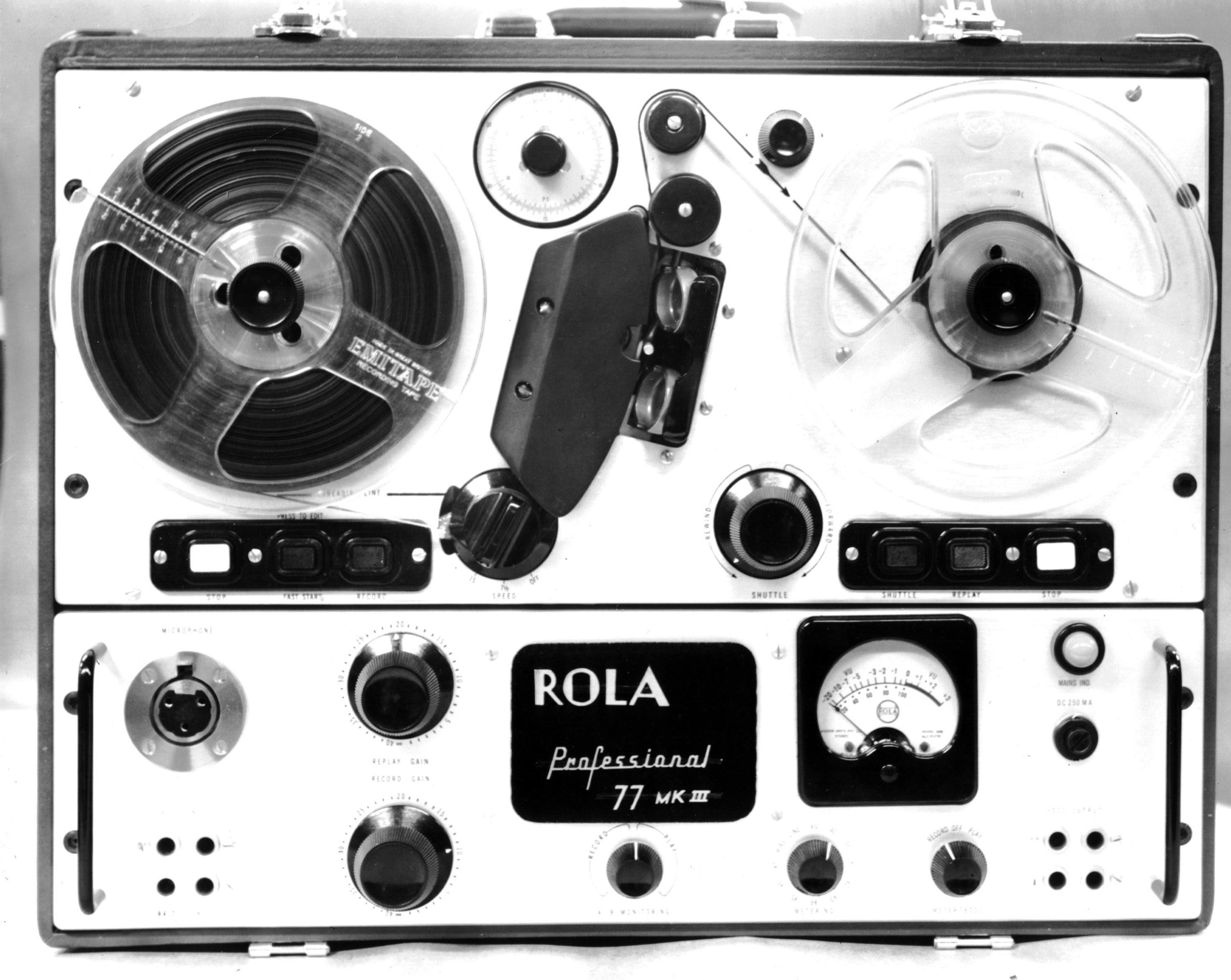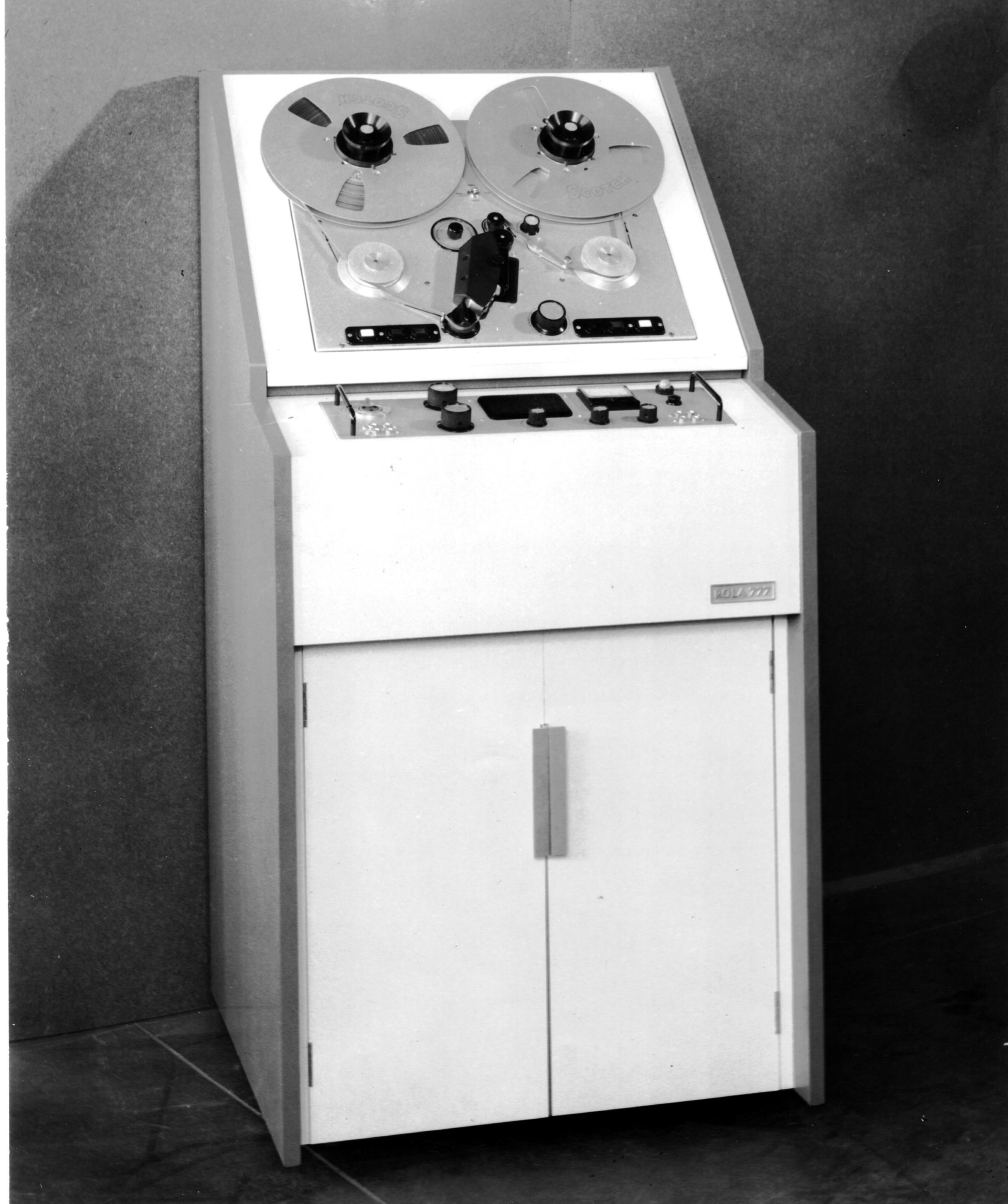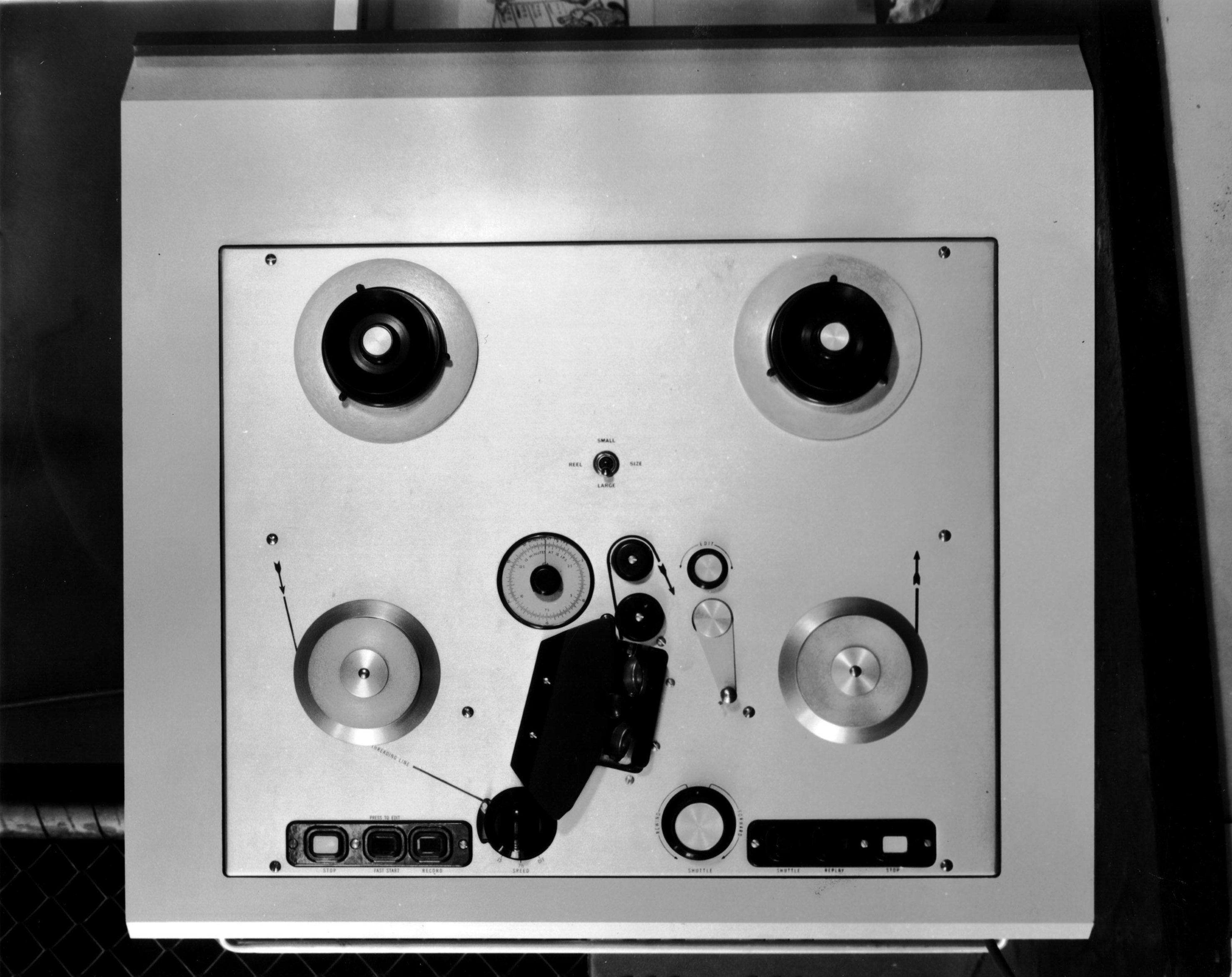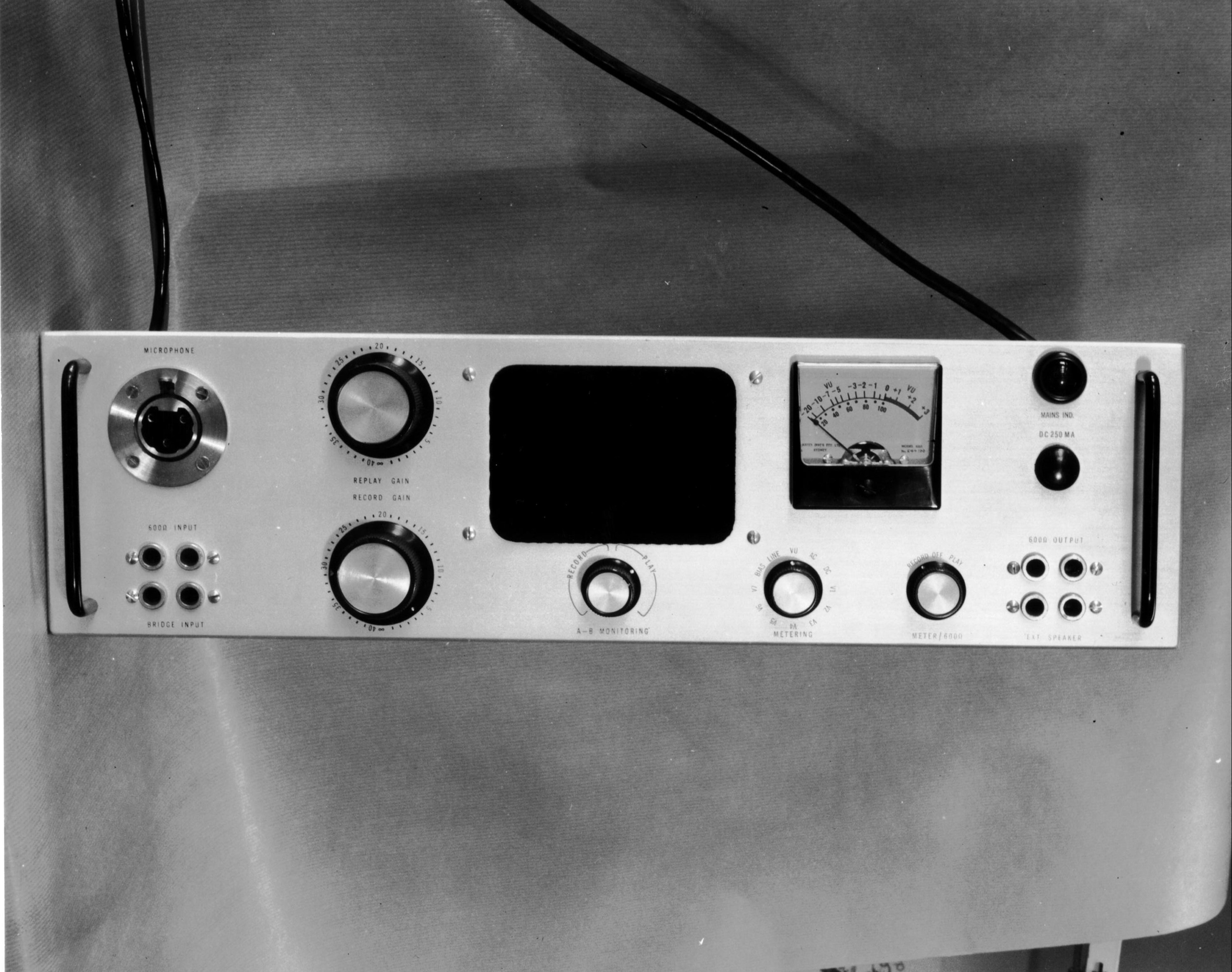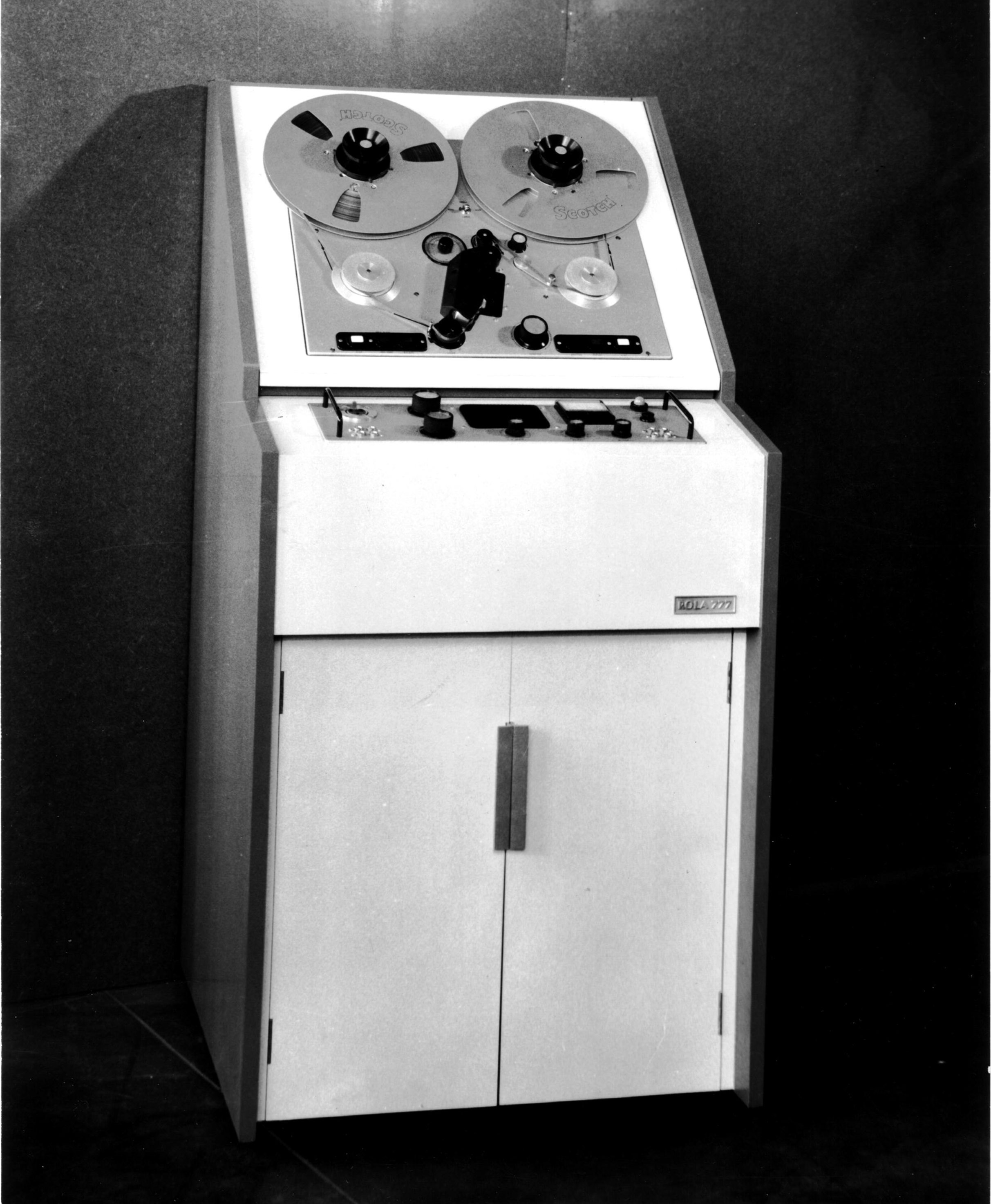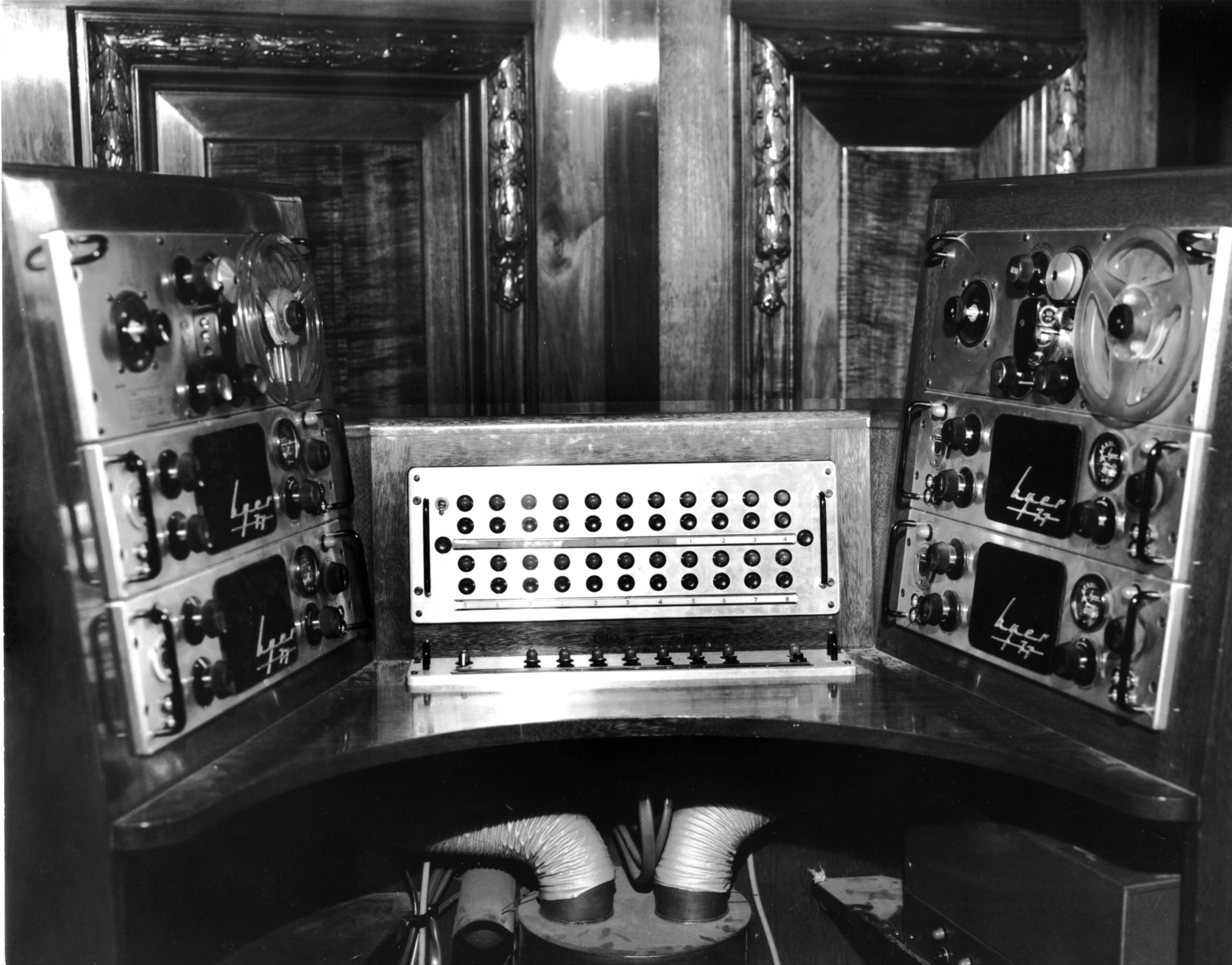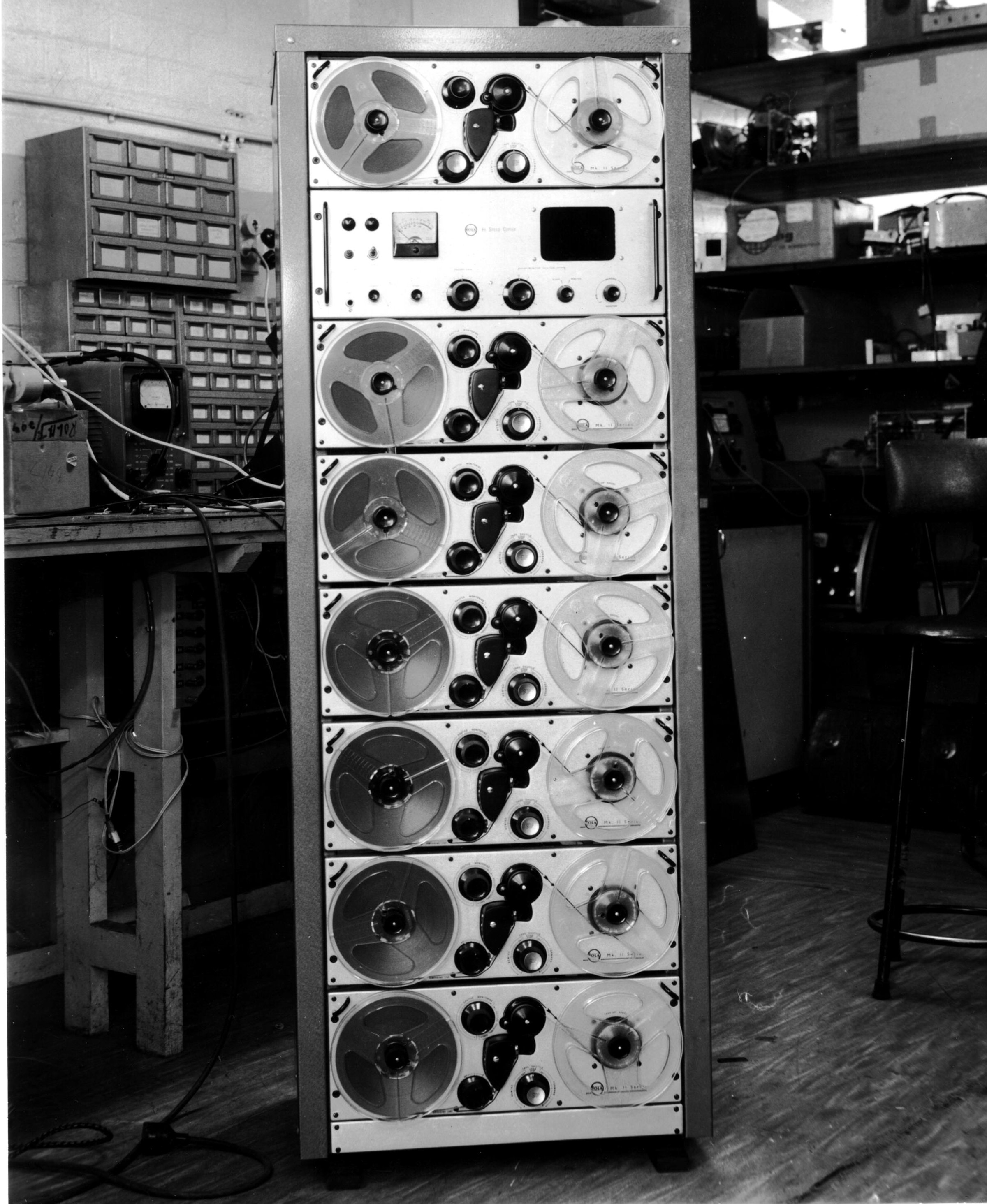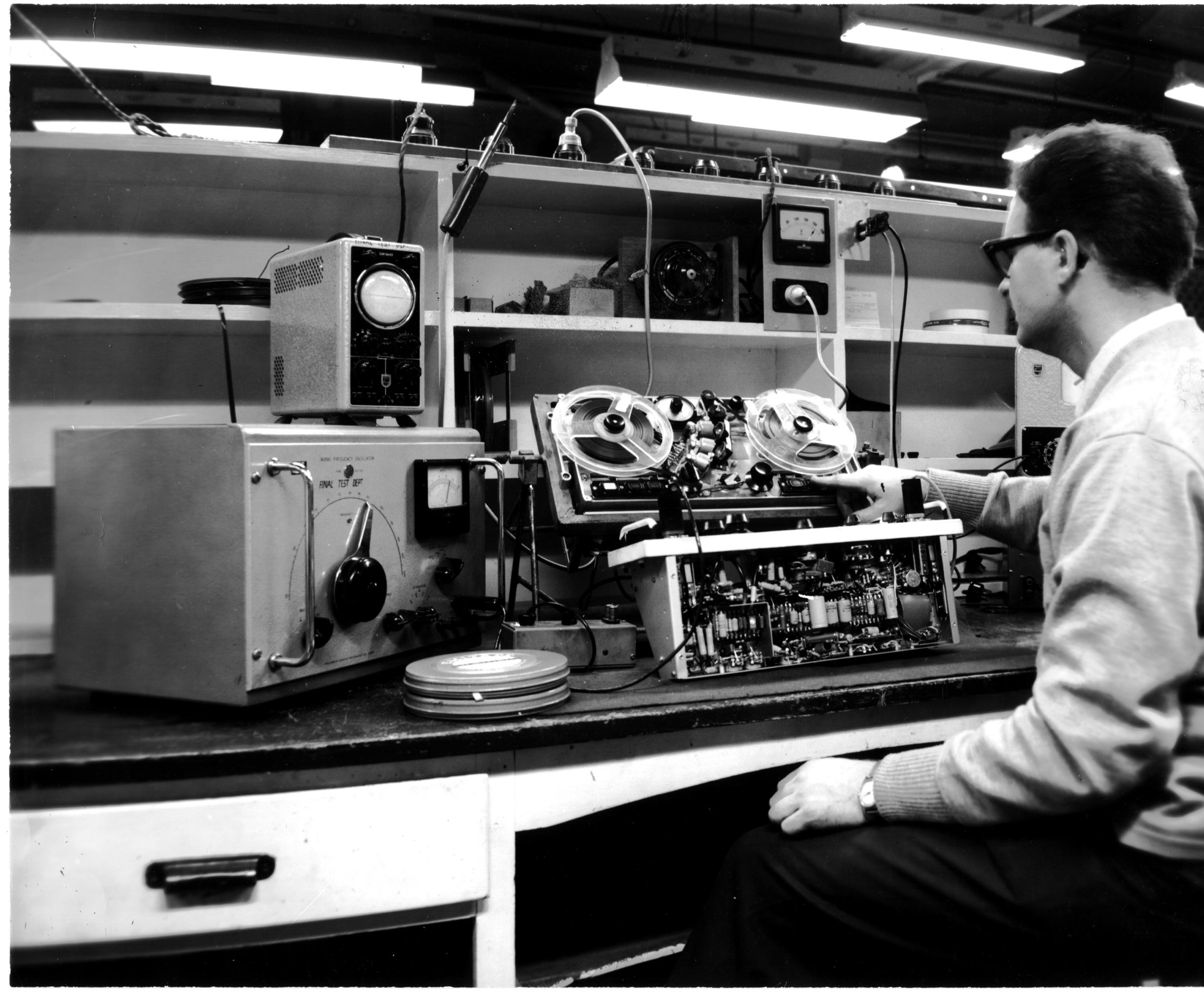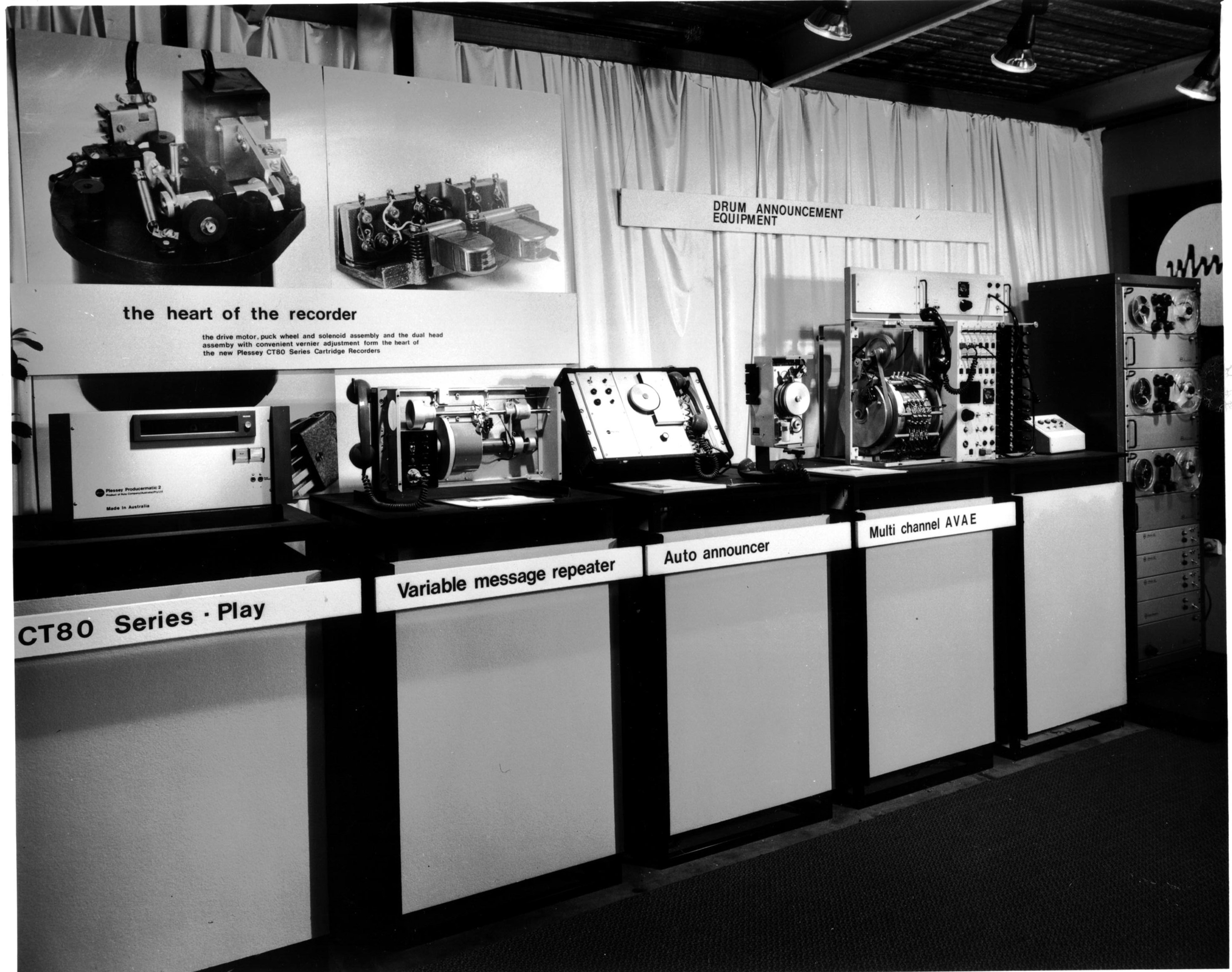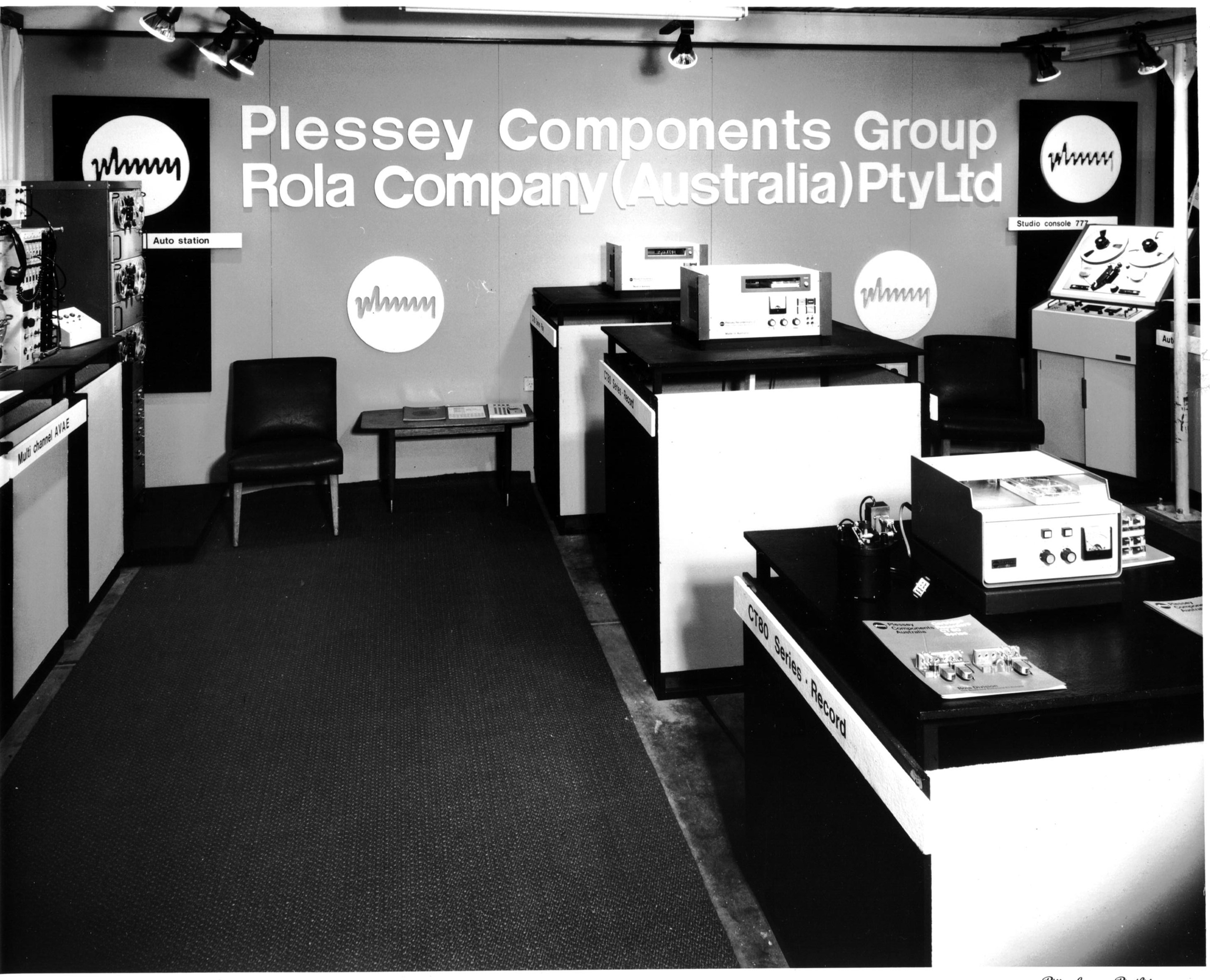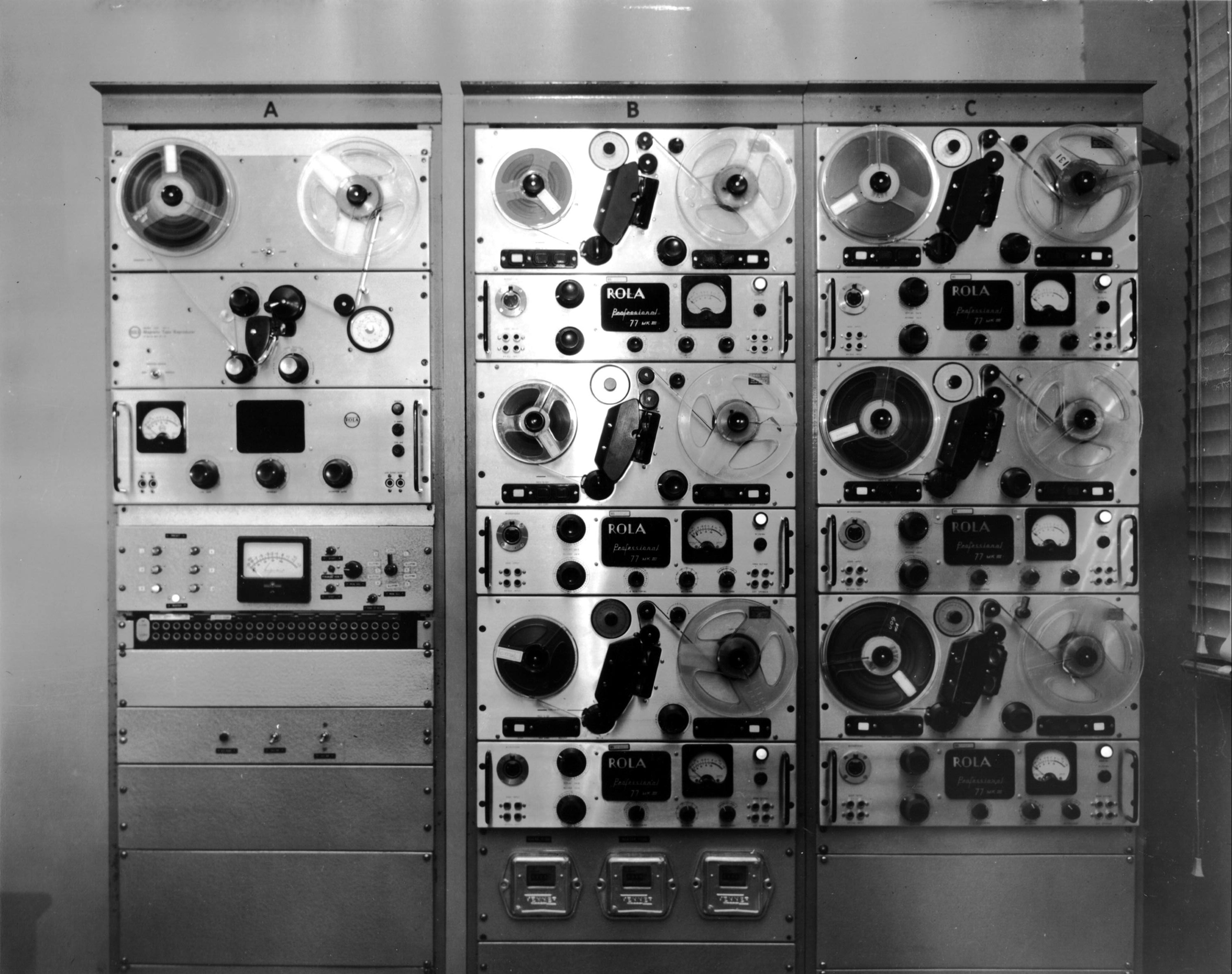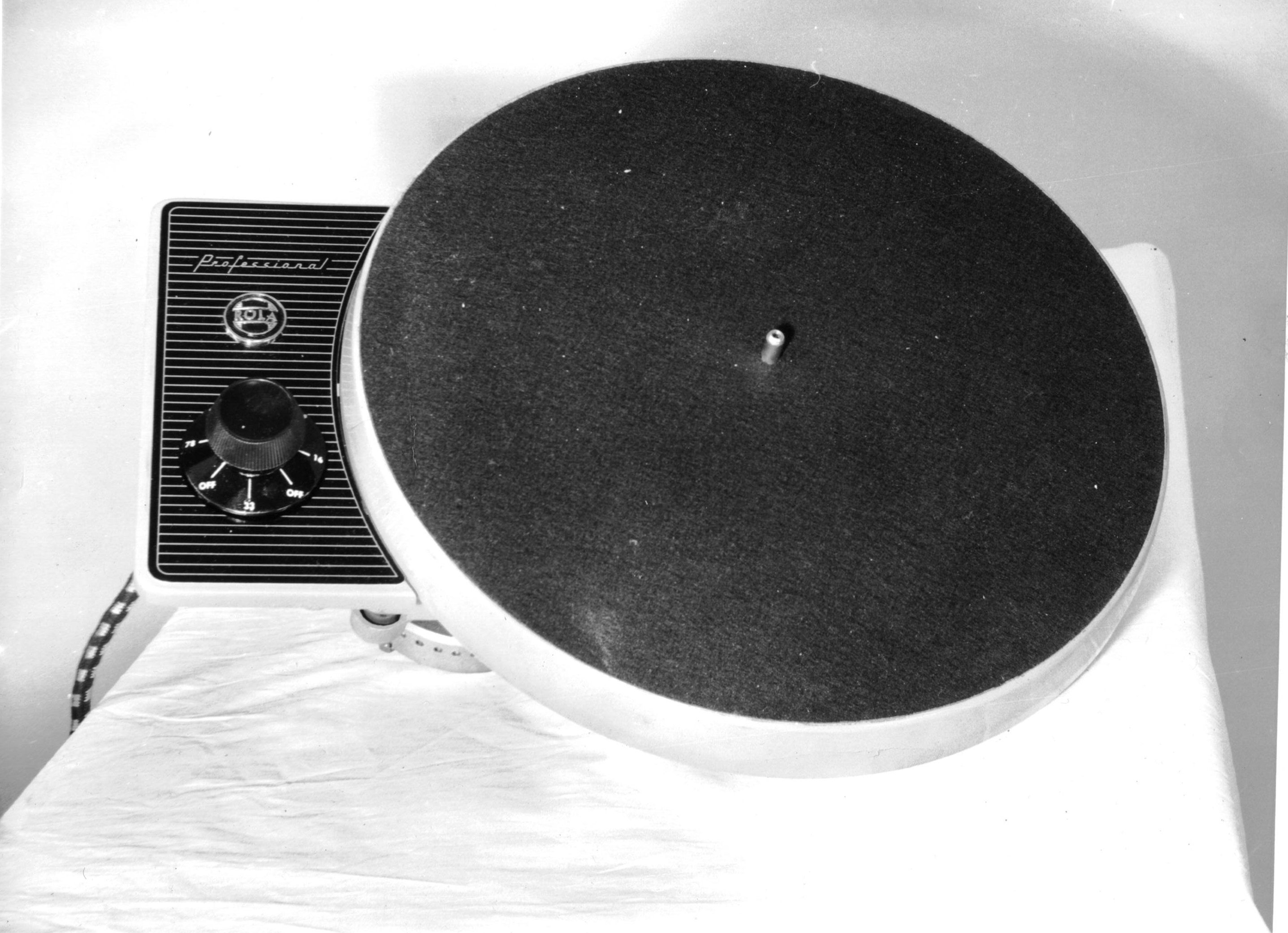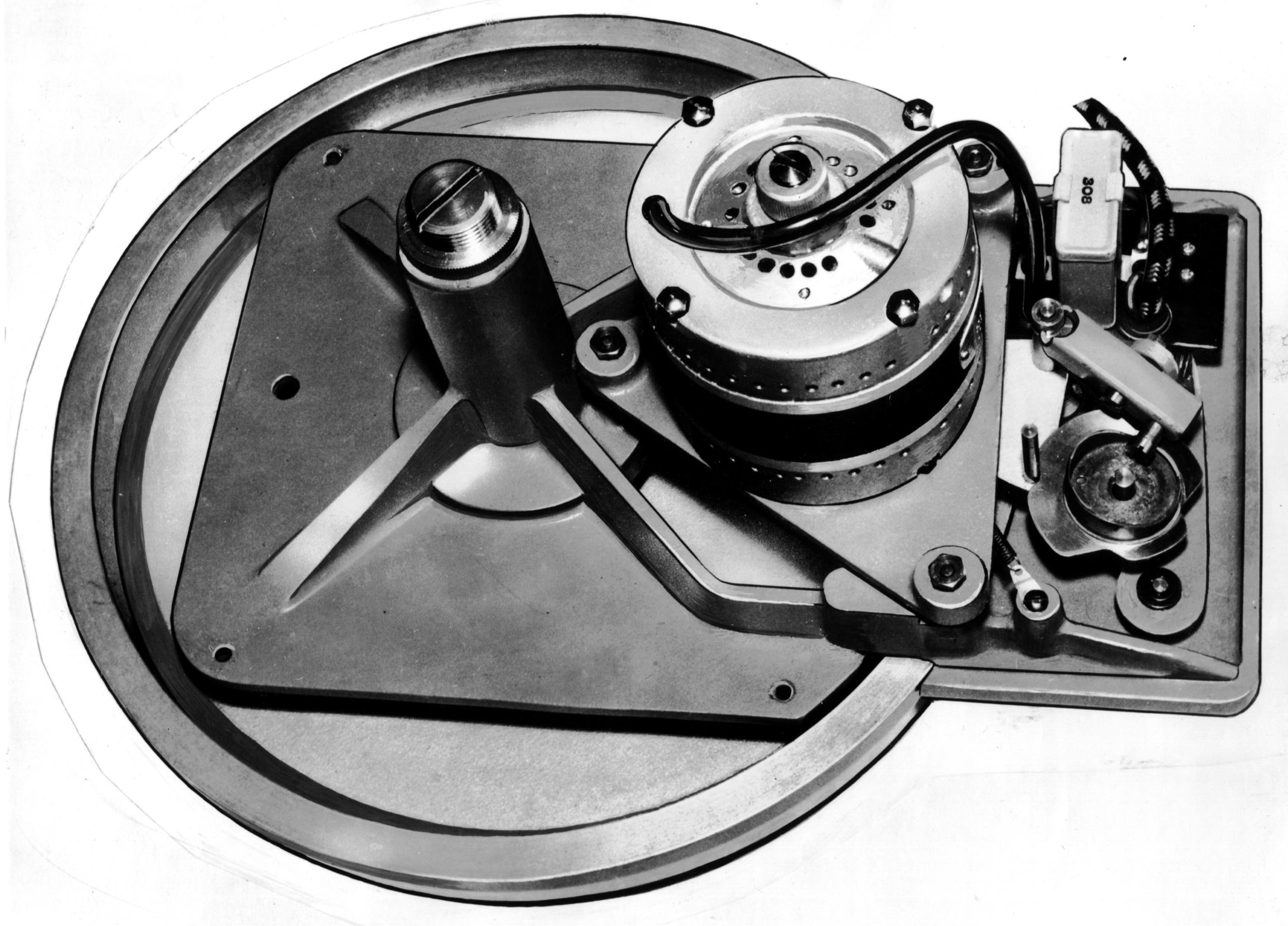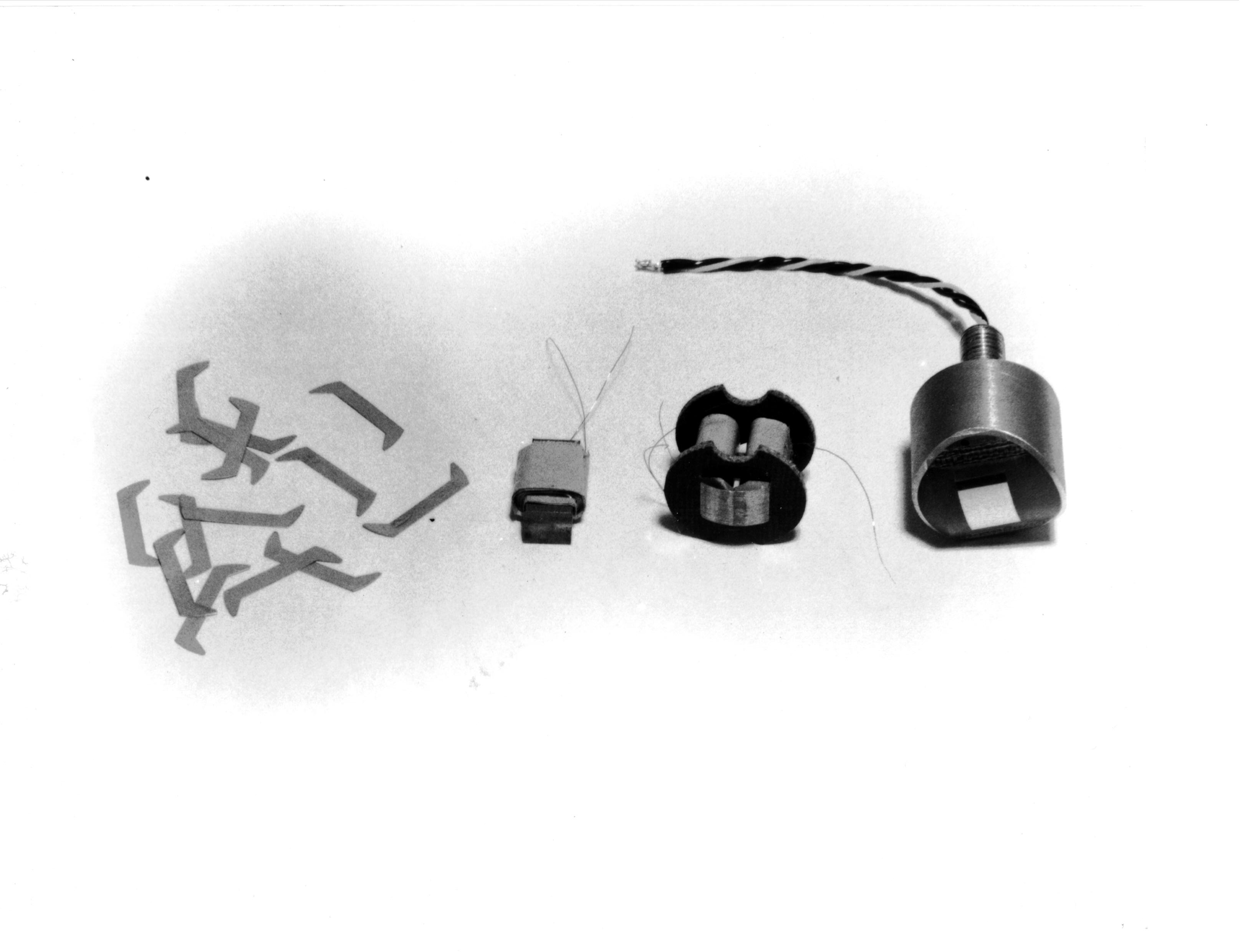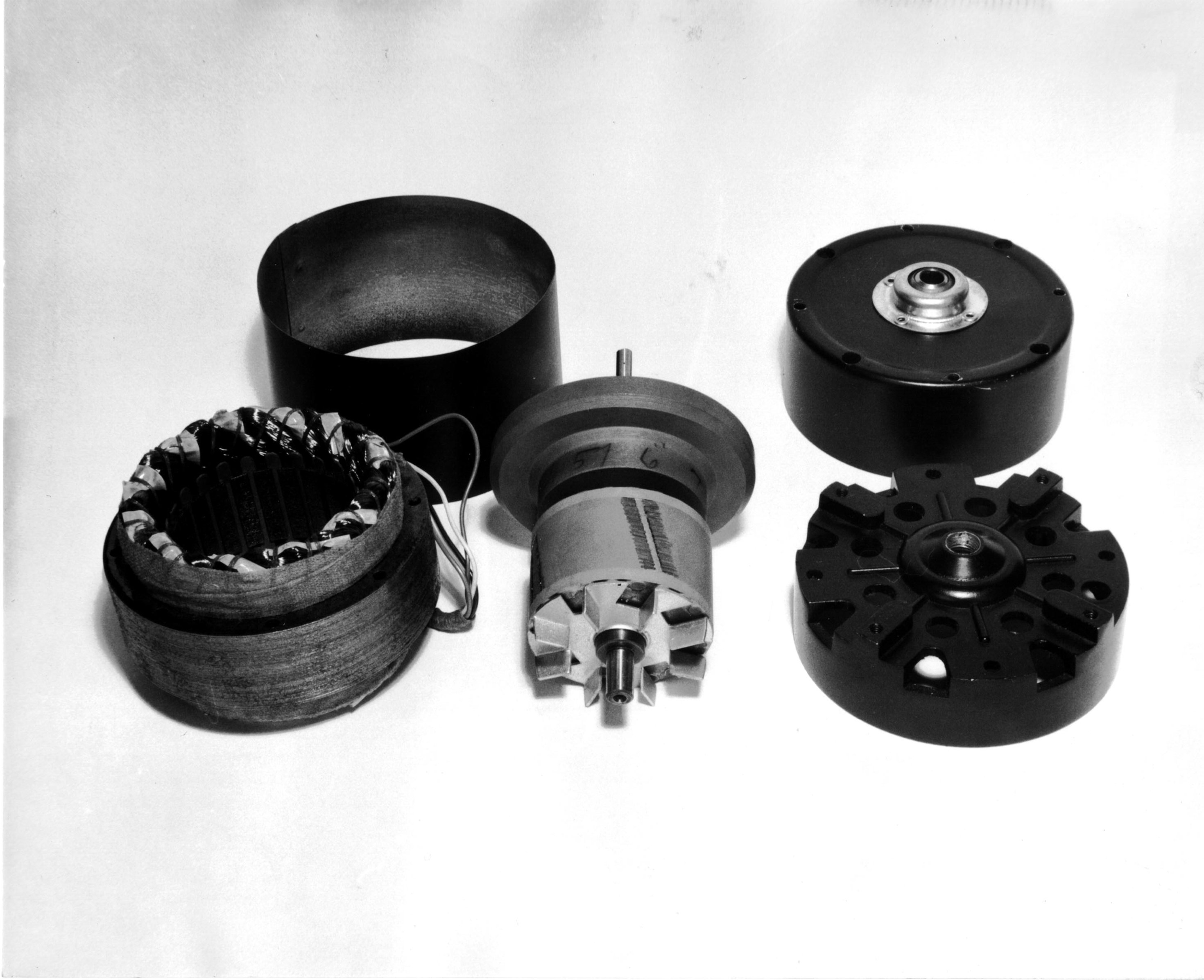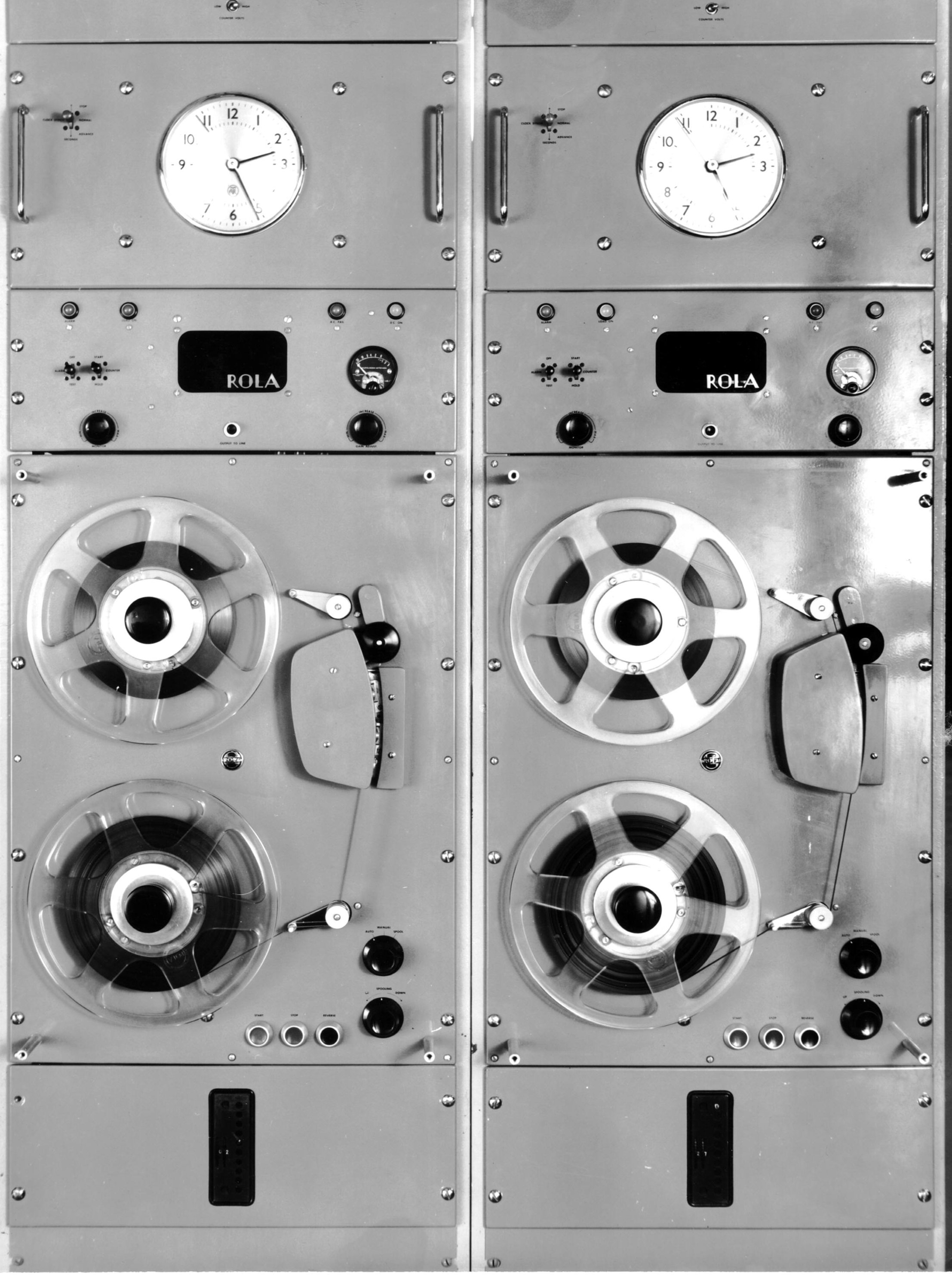Graham Thirkell’s Photos – the Rola era
Page One of Two – Tape-based eqpt & general shots
At one point in his long & illustrious career, Graham Thirkell was at Rola. These photos are from Graham’s personal collection, courtesy of Katherine Thirkell who passed them to the AES Melb Section for safe-keeping. They have been scanned (at 300dpi) and form part of the Graham Thirkell tribute on aesmelbourne.org.au.
Comments and contributions are welcome.
If you know anyone who worked with Graham or at Rola at that time, and who can contribute captions (and context) to these photos please put them in touch with us.
Premises:
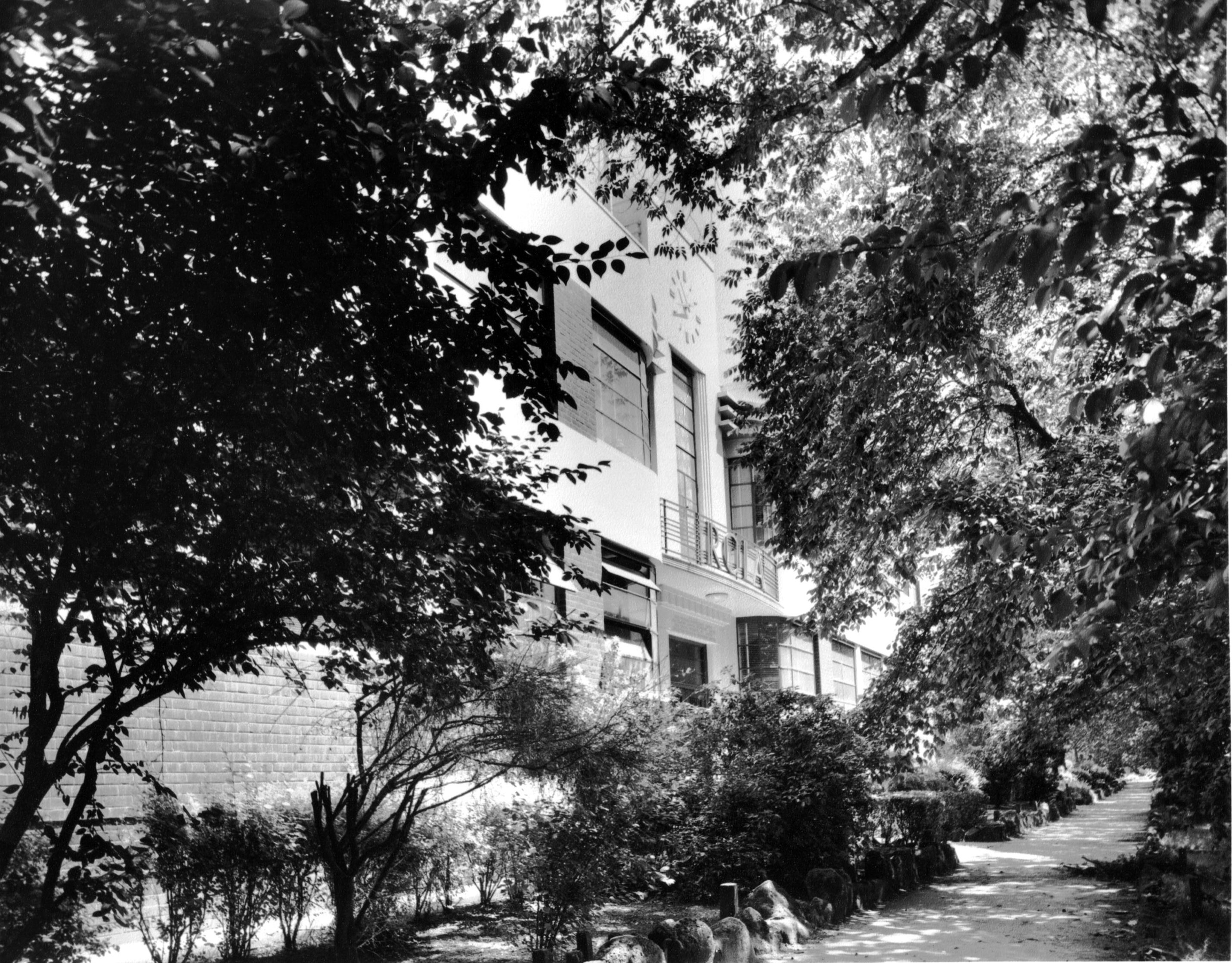
Rola head office in Richmond
– recollections from Graham’s colleague at the time Ian Jackson:
“The head office in the Yarra Boulevard, Richmond, just south of Bridge Road (Mel 2H H8). It contained the office of Rola’s owner (Mr Webb), personnel, the office, the canteen, assembly floor for loudspeakers, transformers and TV yokes, a large home-designed machine to produce loudspeaker cones, the anechoic chamber for testing speakers, the small area where Graham, I and Alan Rowlands designed the products, and the assembly and test area for all the magnetic recording products, and an encapsulation facility.”
Source – Ian Jackson email 25 July 2014
Rola manufacturing plant.
Again from Ian Jackson:
“… located in Browns Road, Harrisfield (Mel 80 G10). It contained the manufacturing plant for magnet winding wires, and I believe plant for manufacturing magnetic tape. Apparently the latter was not a successful exercise.
At the back there can be seen the sawtooth roof of a building. This used to contain the areas that manufactured ceramic permanent magnets (we used them in our speakers, and I understood that at that time they manufactured 90% of such magnets that were used in Australia. I believe that Plessey sold it off as it did not fit into their business model.) It was also where we manufactured all our sheet metal parts, including speaker frames.”
Equipment designed and manufactured here:
The 66 Mark II – a basic recorder. Though it had 3 heads, the one set of electronics was switched from replay to record – making it impossible to “confidence-monitor” during recording. At 45 pounds (20kgs) it is called transportable.
The 33B – I don’t know it but it looks to be an early replay-only unit with 10.5″ reels.
The 77 Mark III – it replaced the 77 Mark II as the radio station workhorse. Still called “transportable” – but it weighed 55 pounds (25kgs).
The Rola 777 (“Three Sevens”) – a console recorder.
777 electronics
This photo show interior view and demonstrates maintenance access
777 again.
Melbourne City Council – Proceedings Recording System – Chambers Recording Console.
Note stereo Byer 77MKII recorders.
High Speed dubbing equipment.
77MKIII in test.
The Rola Auto-Q. From memory this was a 25Hz pulse encoder/decoder to permit auto-cueing multiple tracks on a tape sequentially.
The caption describes as “Auto-Station Equipment” rudimentary radio station automation perhaps??
Here’s a Rola brochure (PDF) describing a case study of a radio station using this for programme automation.
Courtesy: Ian Jackson
These three photos are from a trade display somewhere. IREE Convention perhaps?? The Plessey name is prominent. It had become Plessey/Rola.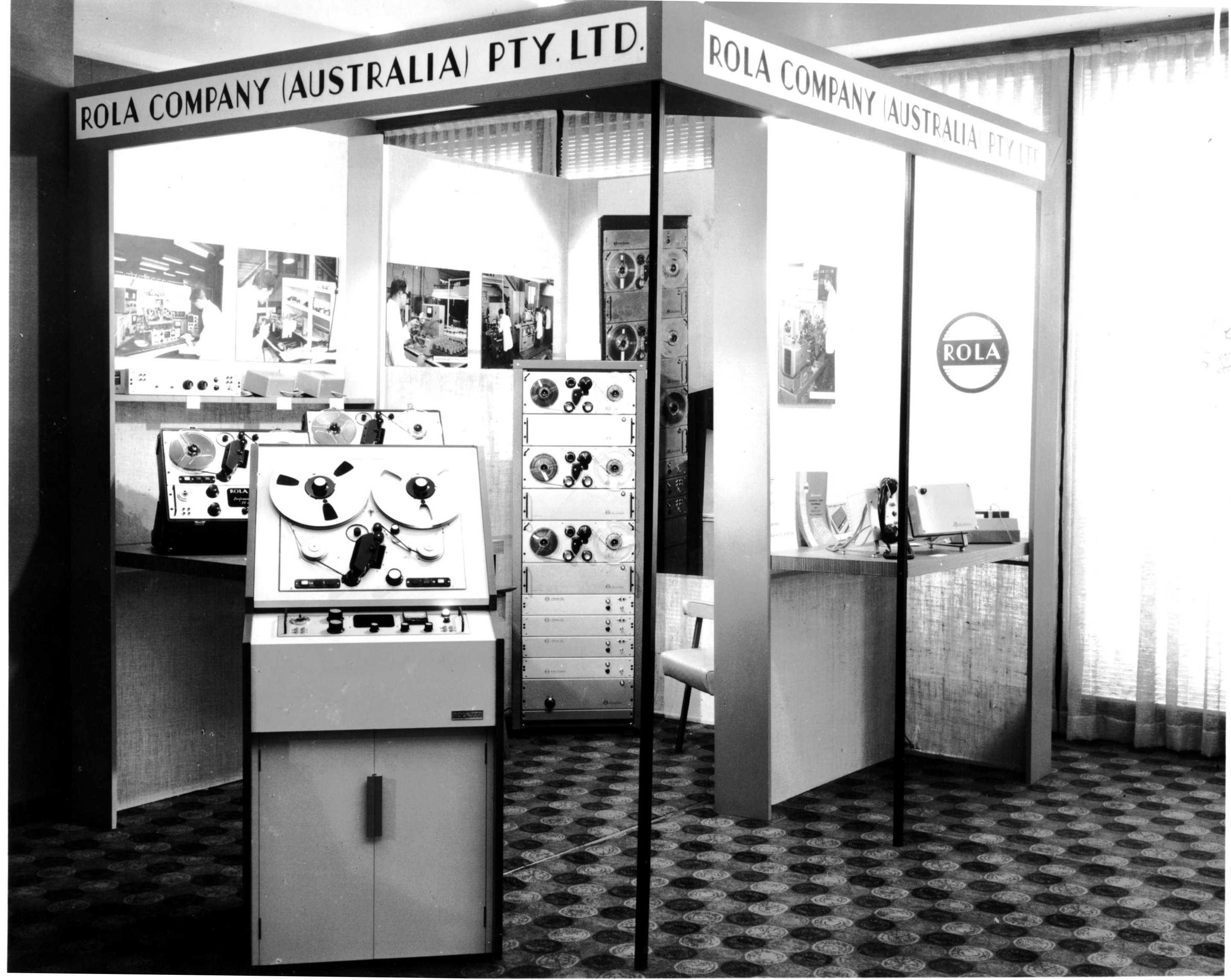
This is an apparently earlier trade display booth (pre-Plessey). Caption says “Menzies Sydney – AFCB Convention Oct 1964” I think it was the FACB Convention (Federation of Commercial Broadcasters). The 777 and the 77MKIII are prominent.
High Speed Duplicator manufactured for ABC Melbourne.
Rola P12 12″ Transcription Turntable. 4-speed. Whatever happened to 16 2/3rpm?
Tape head and internal components. For 77 Mark III?
MarkIII Capstan Motor
MarkIII Capstan Motor – disassembled view.
Time announce equipment.
The second page at http://www.aesmelbourne.org.au/thirkell2/ concentrates on the magnetic drum equipment (auto-announcer, variable message repeater etc).

